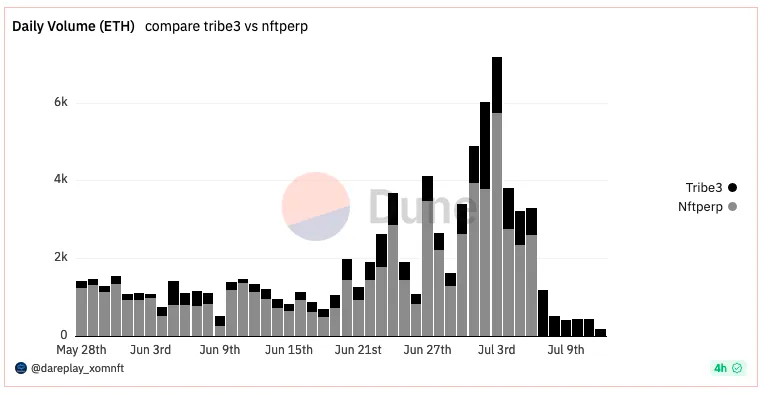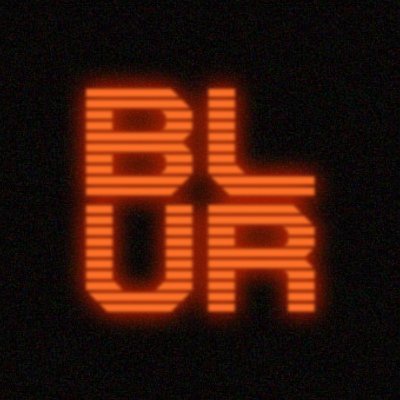Will financialization destroy NFTs? Revealing the reality that the disadvantages outweigh the advantages
Original Title: Has Financialization Ruined NFTs?
Written by: TylerD, Overpriced JPEGs
Compiled by: Deep Tide TechFlow
In 2021, everything was so simple. People really bought NFTs, purchased the works they liked, and acquired NFTs with rare features.
We joined Discord groups to connect with other holders. Communities formed, communication increased, and the number of holders grew. Then, finance began to seep into this mature market, and things started to change.
Many viewed the financialization of NFTs as a sign of market maturity. Some believed it would open the door for larger and more mainstream participants.
But is that really the case?
At least for one important area of the NFT market—the PFP space—financialization seems to have ruined the NFTs we once knew. In this article, TylerD shares his views on the financialization of NFTs by examining market and trading innovations, token incentives, lending, and NFT perpetual contracts/futures, as well as their impact on the market.

Advanced Trading Features
Overall Impact: Negative
In the early part of the last cycle (i.e., late 2020 to early 2021), the NFT market was like a chaotic Wild West, and OpenSea was the king.
True to its name, it was an open ocean of JPEGs. It could be said to be the biggest winner of the 2021 bull market cycle, earning millions in fees from billions of dollars in monthly revenue.
Its success brought competition, first from LooksRare, followed by X2Y2, Gem, and Sudoswap, and finally Blur.

This competition spawned new features in the NFT market, enhancing the trading experience. There were too many features to list, but some of the influential ones included:
Analytical charts and better data access;
Bulk purchasing and listing of NFTs;
Bulk selling of NFTs by accepting bids;
Real-time bidding and bid depth analysis.
At the time, these features were welcomed and are still popular today. However, they were the first to begin changing how NFT traders and collectors viewed their JPEG images.
Once unique digital collectibles with characteristics and features, holders formed connections and valued their possessions. Now, their non-fungibility is fading, and tokens are becoming homogenized.
Bulk purchasing can be said to be the first feature that led NFTs down this path. The ability to purchase NFTs in bulk changed the shopping experience, while the ability to sell in bulk through bidding transformed the selling experience.
While floor sweeping was often cheered in NFT Discord groups, savvy holders soon realized the issue—most sweepers were more likely to become sellers, and so on. They didn’t care about which NFTs they owned; they were merely tokens to buy and sell.

Thus, although these features improved the trading experience, the experience of collecting and holding the underlying assets began to deteriorate. The advancements in trading features had a negative impact, even if it wasn't fully recognized at the time.
However, compared to the impact of the next phase of market competition: the effects of token incentives, the impact of advanced trading features seems pale.
Token Incentives
Overall Impact: Negative
By the end of 2022, most PFP projects had perished. Those that survived seemed hopeful for success.
The new generation of projects was led by Bored Ape Yacht Club (BAYC), followed by Azuki, Doodles, Moonbirds, and Clone X, each seemingly having its own unique and strong community.
However, everything changed in February 2023. Blur announced an airdrop and mining for its second season. Early users received $BLUR tokens through the airdrop, providing over $275 million in liquidity to the market.

With these incentives, liquidity flowed back into the PFP market, and prices rose for several weeks. An additional $300 million in airdrop promises attracted new (seemingly DeFi-native) traders into the space.
Miners could earn points by listing and bidding on NFTs. And the clever ones naturally found ways to manipulate the system. These speculators bought NFTs without receiving rewards; once their bids were accepted, they wouldn't accumulate points, so the game became: keep the bids high but not accepted.
This revealed a fact: these farmers didn’t really want these NFTs; they just wanted to accumulate points for $BLUR tokens.
In the BAYC market, this issue became more apparent after some well-known traders/founders/OSF and Mando traded Bored Apes. They sold 71 BAYC at once for 5,545 ETH (worth $9 million at the time) in just a few seconds.
And the speculators participating in bids on Blur had just absorbed 71 BAYC NFTs they didn’t want, triggering a chain reaction. A group of people began trading these NFTs with each other to accumulate points.
Thus, people observed two things:
The same NFTs were traded dozens of times;
Prices began to decline.
Speculators had calculated the acceptable loss for each trade as long as they offset enough Blur points through points. Since February 2023, this situation has led to a gradual decline in asset prices, which continues to this day.
One could argue why new buyers haven’t entered these ecosystems. Many point to shortcomings in execution and vision from the teams and founders. This does hold some truth.
But another driving factor—possibly a more important one—is that these NFTs (especially PFPs) have lost their mystique. Buying a Bored Ape that has been traded dozens of times is not as appealing.
Famous NFT trader Cirrus made an analogy, saying it’s like walking into a Rolex store and seeing several luxury collectors tossing Rolex watches at each other all morning. Would you want to buy those Rolexes?
As this process unfolded, the characteristics that initially attracted many into the PFP market (identification with features, purchasing an NFT worthy of being a profile picture, connecting to the community) gradually faded.

These PFPs became tokens used for trading to accumulate $BLUR tokens. Their non-fungibility further diminished, which is why I believe the impact of token incentives on the market is negative.
NFT Lending
Overall Impact: Positive
As the market war continued to brew, a new financial domain began to take off: NFT lending.
By April of this year, the cumulative trading volume of the NFT lending market surpassed $1 billion, and after Blur launched its Blend platform, the market recently crossed the $2 billion threshold in June.

NFTfi was the first platform to enter the market, launching in the spring of 2021 and reaching about $400 million in trading volume by the end of 2021.
The product is quite simple. NFT holders use their assets as collateral and set the desired loan conditions, while borrowers make offers on these NFTs. If the NFT holder accepts these conditions, they will accept the transaction and receive WETH, while the NFT will go into escrow. If the loan is repaid on time, the holder will get the NFT back; otherwise, the borrower will receive the NFT.
Subsequently, other competitors entered the market, including other peer-to-peer lending protocols like Arcade.xyz and pool protocols like BendDAO and JPEG'd. Loan terms became longer, and annual interest rates decreased.
Soon, NFT holders had several options, with new entrants like BendDAO promoting loans without repayment dates, as long as the asset value remained above a certain liquidation threshold.
Then, in May 2023, Blur launched its Blend program, adding lending and a type of options market (Buy Now, Pay Later) to its protocol, along with token incentives for loan offers.
Loan-to-value (LTV) ratios increased, and annual interest rates dropped directly to 0. More leverage entered the ecosystem, which became increasingly evident in the recent Azuki Vegas party, Elementals disaster, and subsequent PFP liquidation chain reactions.

While some may argue that NFT lending has potential negative impacts, as leveraged trading often ends in disaster (especially for inexperienced, overexposed traders), to me, this feature is more positive.
The ability to obtain liquidity using NFTs as collateral makes it easier for holders to retain their NFTs for longer periods.
Moreover, protocols like NFTfi, Arcade, and even Zharta allow specific offers for specific NFTs, so characteristics, rarity, etc., do hold value in the lending process.
Non-fungibility is indeed rewarded, so I believe NFT lending is a positive evaluation.
NFT Perpetual Contracts, Options, and Futures
Overall Impact: Negative
Arguably, one of the hottest financial trends in the NFT bear market is going long or short on NFTs through perpetual contract protocols (like NFTperp and Tribe) and Wasabi (peer-to-peer).
Perpetual contracts and futures allow traders to bet on the future price of an asset, often using leverage. For example, NFTperp allows users to use up to 10x leverage in trades (meaning a 1 ETH bet is equivalent to a 10 ETH position). The difference between perpetual contracts and futures is that perpetual contracts can remain open indefinitely, while futures have a set expiration date.

Here’s a brief overview of how these protocols work: perpetual contract protocols use virtual automated market makers (vAMM) to allow traders to bet long (expecting prices to rise) and short (expecting prices to fall) on NFTs. As described by well-known crypto KOL 0xFoobar, their operation is similar to Uniswap v2 pools but without actual liquidity. They simulate liquidity algorithmically and adjust prices up and down based on the volume of long and short trades.
This product allows holders to hedge against the decline in value of their NFTs by opening short positions, enables those without enough funds to purchase NFTs (like a BAYC for 35 ETH) to bet on their rise with any amount of long positions, and allows those who believe a certain NFT will decline to bet on that trend through shorting.
All three use cases are meaningful and occupy a place in traders' overall trading strategies. However, these trades and underlying models have limitations and may be tested during extreme market events, which NFTperp just discovered in a difficult way.
Recently, NFTperp unexpectedly shut down its platform, stating it had accumulated $518 million in bad debts from futures trading. They have shared some details of what happened, but it is likely due to the Azuki Elementals mint and subsequent liquidations causing a significant drop in the NFT market, increasing the short trading volume on NFTperp, which led to an unmanageable shock to the system.
This move left Wasabi and Tribe as the only remaining shorting protocols in the market.

Overall, NFT perpetual contracts, options, and futures are the newest and least mature segment of the NFT financial market, with some believing that NFT perpetual contracts are destined to fail by design (a viewpoint worth discussing separately).
But one thing is clear—among all the financial aspects discussed so far, perpetual contracts and futures may have the most negative impact on maintaining non-fungibility.
On the surface, the only thing that matters is the floor price (more accurately, the oracle price of the vAMM). The entire community and collectibles are reduced to numbers on a screen. Rare items don’t matter. All bets are related to fluctuations in the floor price.
Therefore, I give NFT perpetual contracts, options, and futures a negative overall evaluation.
Conclusion
The views expressed here primarily focus on the NFT PFP space, as Art Blocks and the broader digital art market, along with other NFT areas like gaming and the metaverse, have largely been unaffected by token incentives and benefits.
Interestingly, the Art Block index has slightly risen over the past year, while the PFP index has fallen over 50%.
Perhaps the most destructive evidence lies in the CryptoPunks market, which maintained a stable 10% range for 200 days before being added to Blur incentive bidding, followed by 120 days of extreme volatility with price swings of +15% to -40%.

Thus, summarizing the evaluation of the impact of NFT financialization on the PFP space:
Advanced trading features ------ Negative;
Token incentives ------ Negative;
Lending ------ Positive;
Futures, perpetual contracts, and options ------ Negative.
As the non-fungible token market evolves, we begin to see the impact of various features and mechanisms on this new market. Many features and mechanisms have had significant unintended consequences. However, most of these financial innovations have eroded the non-fungibility of NFTs.
This erosion of non-fungibility has negatively affected collectors' desire to hold these assets, which is reflected in the market. Sadly, the damage done to this market may be irreversible, with the possible outcome being that existing PFP collectibles may never see ATH again.
Perhaps our early NFT market didn’t need so much financialization, and maybe new innovations will reignite non-fungibility.












